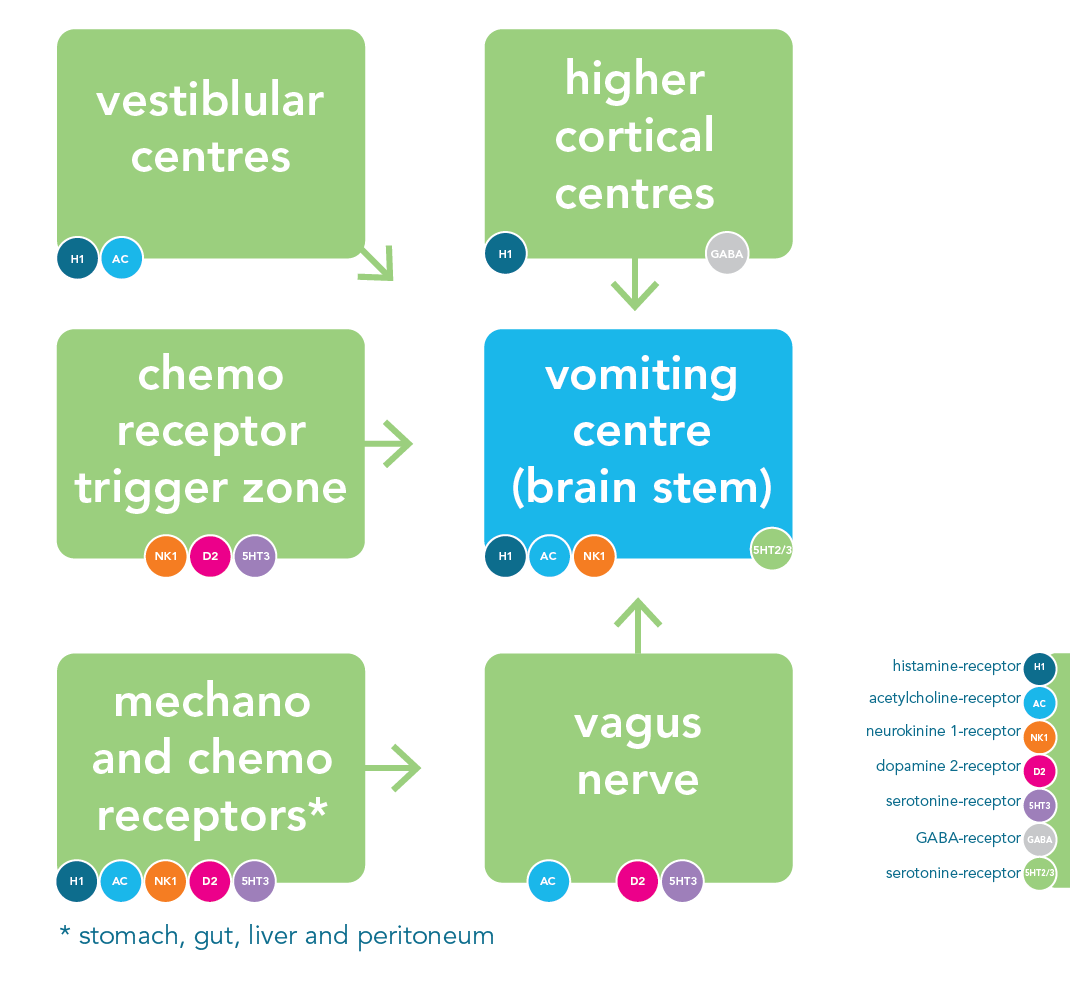Pathophysiology
The nausea and vomiting response is regulated by the vomiting centre (the nucleus of the solitary tract and dorsal nucleus of the vagus nerve), which is found in the brain stem (see Figure 1). The various neurotransmitters and receptors involved in the regulation are: dopamine-2 (dopamine or D2 receptor), serotonin (serotonin or 5HT3 receptor), acetylcholine (acetylcholine or muscarinic receptor), histamine (histamine or H1 receptor), substance P (neurokinin-1 or NK1 receptor) and gamma-aminobutyric acid (gamma-aminobutyric acid (GABA) receptor).
The most important afferent routes for these factors derive from:
- the vagus nerve
- the chemoreceptor trigger zone, which is also located in the brain stem (area postrema), but outside the blood-brain barrier
- the labyrinth
- higher cortical centres
Peripheral stimulation of chemo- and mechanoreceptors in the stomach, intestine, and peritoneum activate the vomiting centre via the vagus nerve. Stimulation of the vomiting centre is induced by receptors in the chemoreceptor trigger zone, which are activated by medications and metabolic disorders (e.g. hypercalcaemia or renal insufficiency). Vestibular and cerebral/psychogenic factors affect the vomiting centre by means of the afferent routes from the labyrinth and the cortical centres, respectively.

Figure 1. Pathophysiology of nausea and/or vomiting
H1 = histamine receptor; AC = acetylcholine receptor; NK1 = neurokinin-1 receptor;
D2 = dopamine-2 receptor; 5HT2/3 = serotonin receptors. GABA = gamma-aminobutyric acid receptor
The vomiting centre stimulates the diaphragm (via the phrenic nerve), the striated muscle tissue of the abdominal wall and thorax (via the spinal nerves), and the muscle tissue of the stomach, oesophagus, larynx, and pharynx (via the vagus nerve). This stimulation produces the retching sensation and/or vomiting and accompanying symptoms.
Prokinetic drugs (metoclopramide, domperidone) promote gastric emptying by blocking D2 receptors in the gastric wall; additionally, metoclopramide activates receptors in the gastric wall, which leads to release of acetylcholine, which in turn further promotes gastric emptying.
